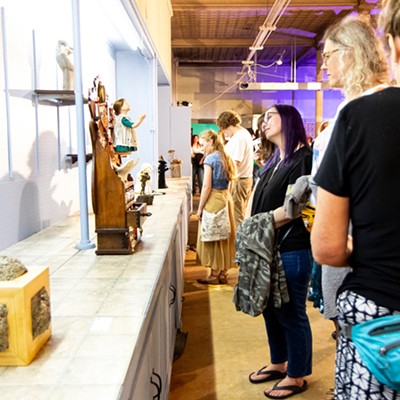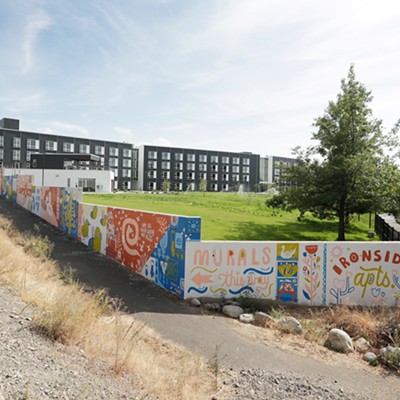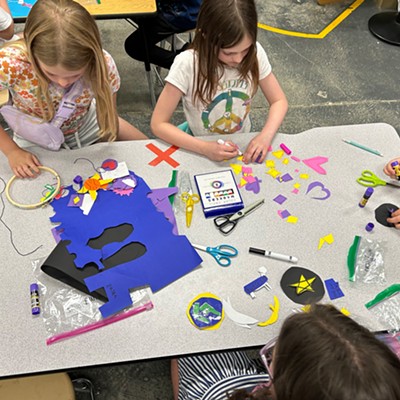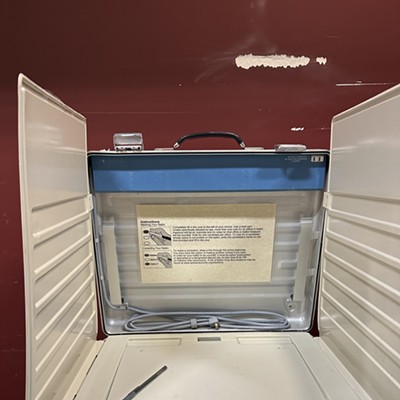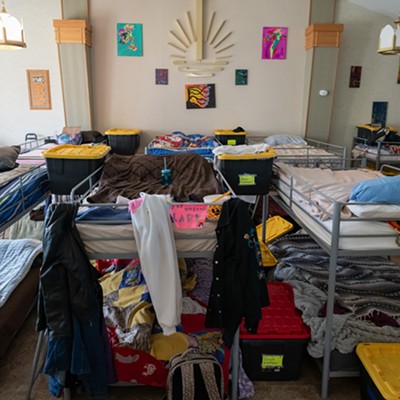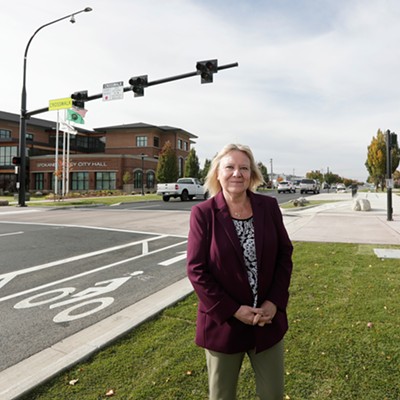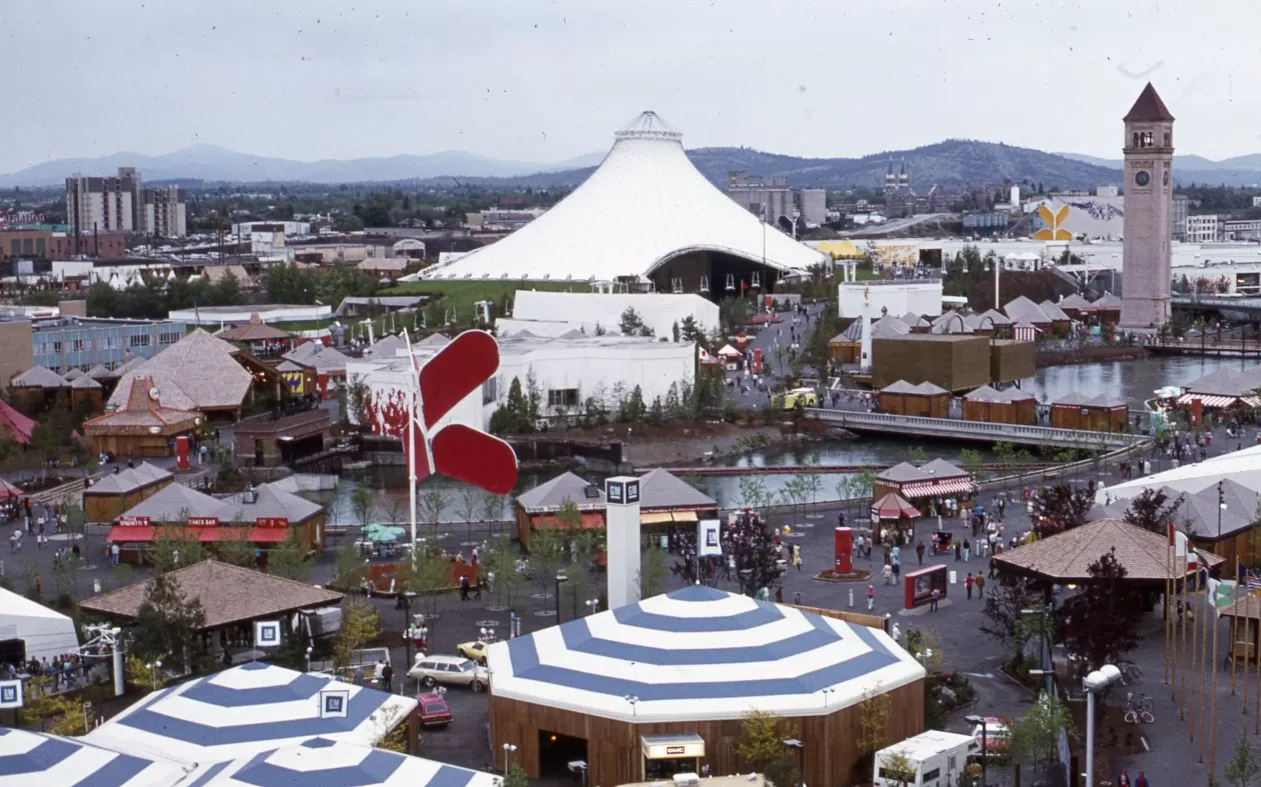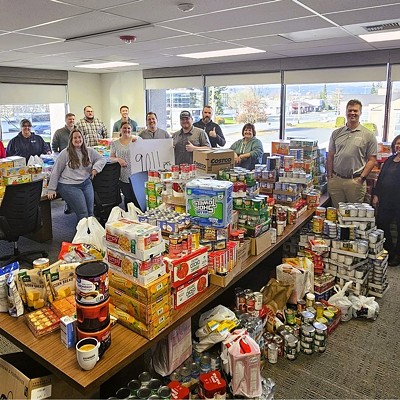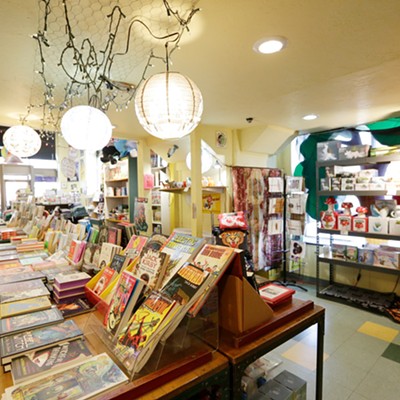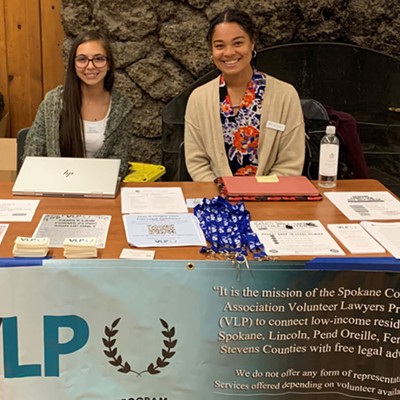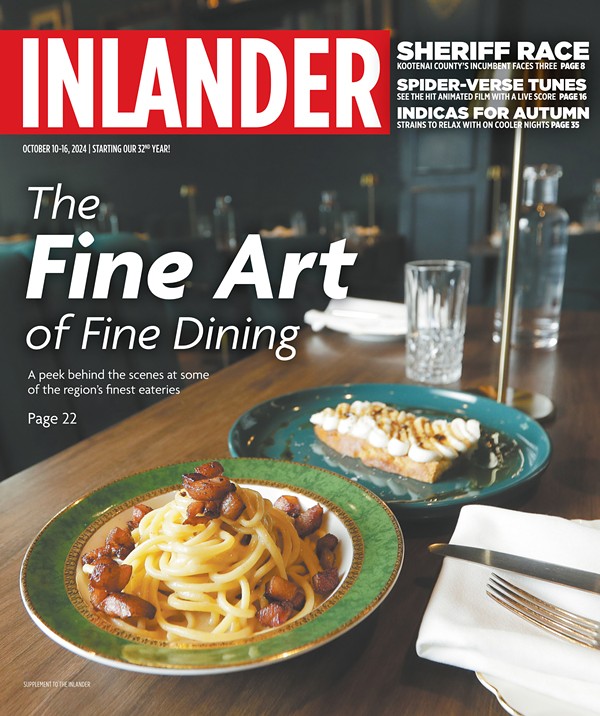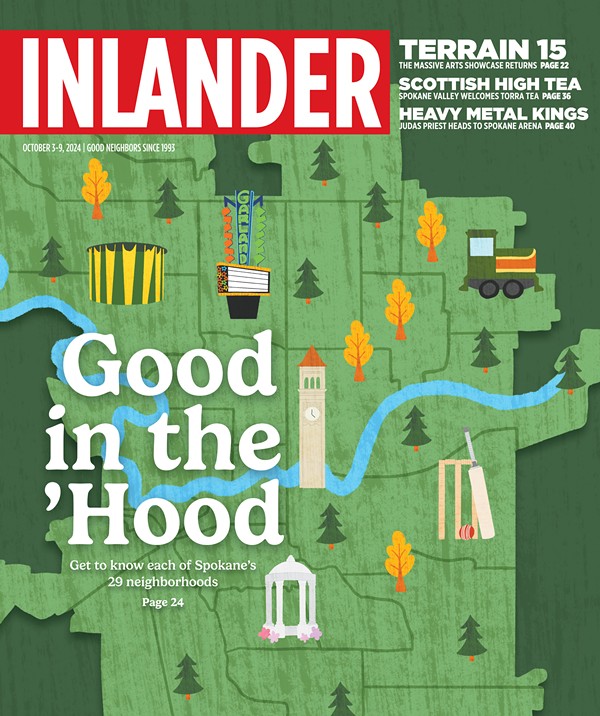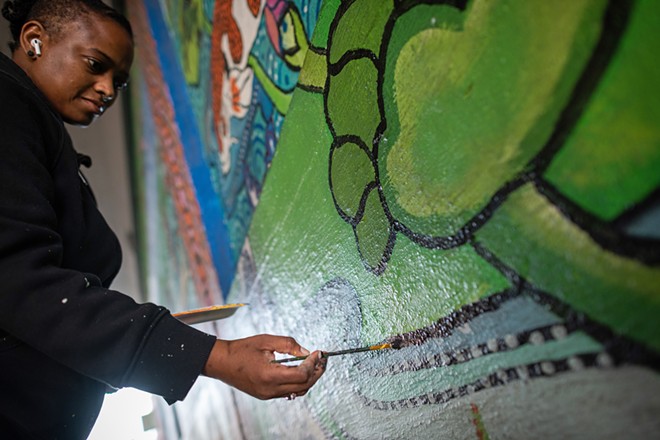
A distinct rattle signals the strong paint scent wafting from a spray paint can darting across a public canvas, drawing a name or design that isn't supposed to be there. The graffiti artist bolts from the location as quickly as they made their mark, possibly on the lookout for a new canvas.
Then, just as quickly as the graffiti was put down, a block of beige paint takes its place.
"When I paint something, I have the full expectation that it could be gone tomorrow," says a Spokane graffiti artist who goes by Komos. "It's one of the things that attracts me to the art form, almost more than anything else, that it's constantly changing and that the walls are alive."
To some, it's not art at all, but vandalism. Luis Garcia, Spokane's code enforcement director, says painting over graffiti as quickly as possible is key to keeping more vandalism at bay.
"The challenge with graffiti is [it] acts as an attractive nuisance," Garcia says. "It usually attracts other graffiti and other illicit activities, so we try to get to them as soon as we can because as soon as we cover it up, it usually stays pretty clear for a duration."
But what's worse, a beautifully wrought piece of illegal art, or a dull square? And, how long before that beige paint is tagged over again, with bright colors and bold lines?
The word graffiti is often used to describe any form of painted vandalism as a whole, but the term often conjures up images of bold and brightly painted words with thick outlines and shadows, as well as street art and tagging. And it has a history stretching back more than 50 years.
According to Antar Fierce, a graffiti artist and the co-founder of Steel Wheels, an Atlanta-based organization dedicated to the documentation and preservation of graffiti, the art form originated in the 1960s and '70s in New York City and Philadelphia.
"In the beginning, it was kids from marginalized communities who didn't have access to arts programs," Fierce says. "They came up with this art form as a way to have something for themselves in a community that they could feel recognized and appreciated in, and it developed into an art form from that."
While lots of the graffiti throughout Spokane consists of simple tags — quickly drawn words, symbols or messages used to mark a location — more stylized bubble-letter "throws" of an artist's name create recognition among the graffiti community and in the city as a whole. Other artists prefer to use graffiti art, primarily in the form of throws or more detailed street art, as a way to improve an area that's plain or to cover existing graffiti that's offensive or ugly.
To Komos, graffiti brings life and excitement to dull and drab spots in the city.
"I often will be confronted with designs that I think are ugly, or a sign, or somebody puts up a billboard," Komos says. "How is that different than someone else putting up their name in graffiti letters?"
The one and only difference, Komos says, is that one person has the money to create a design and display that message in the public eye, and the other person doesn't.
"I like it whenever I see someone who's generally powerless in our society, exercising power that people don't like them to have."
COVERING IT UP
In 2022, the Downtown Spokane Partnership removed 4,541 graffiti tags, which took about 3,000 hours of staff time. The DSP's Clean Team works seven days a week in downtown's Business Improvement District, which is composed of businesses and property owners.
"The city of Spokane recognizes that people on private property that do get tagged, they are victims," says Garcia. "We want to work with those individuals to get it relieved without undoing their responsibility, because the taxpayers of Spokane shouldn't subsidize the maintenance of individual private properties."
Graffiti is listed as a gross misdemeanor in the City of Spokane Municipal Code.
Something similar happens in the city of Spokane Valley, which partners with Spokane Community Oriented Policing Services, known as SCOPE, to document graffiti, track it and work with property owners to remove graffiti so they can avoid being fined.
SCOPE connects with private property owners and creates a plan to remove the graffiti after it's reported to crime check, says SCOPE director Chris Conway.
"We've kind of taken the mindset that we want to work with the property owner," says Spokane Valley Police Chief David Ellis. "They've already had damage done to their property. We don't want to have them be victimized again by getting a fine for something that they didn't do."
MURALS AS DETERRENT
Before the COVID pandemic, there was an unspoken rule that you wouldn't see tags on murals or other public art.
"During the pandemic, everyone's behavior changed so dramatically and there was such a lack of people out and about," says Melissa Huggins, executive director of Spokane Arts. "There was just no activation, no eyes on those murals, and so a number of them got really heavily tagged during the lockdown."
While she says that murals often act as a deterrent to graffiti, this greatly depends on a mural's location. Some may get heavily tagged, while another mural only a couple blocks over remains virtually untouched.
Over the last couple weeks, Spokane Arts and DSP took on a difficult project: remove graffiti and tags from nine existing murals in the downtown core.
For the cleanup, Spokane Arts spent around $4,500 on supplies, and an additional $2,000 on anti-graffiti coating, which makes removing graffiti much easier while preserving the mural underneath for up to a decade or longer. And it took 40 volunteers and 10 artists to restore the artworks.
While Huggins notes how destructive graffiti can be, she recognizes the art form that it is and hopes to see a designated area in the city for graffiti art.
"Boise has this incredible [graffiti alley]. It's become a tourist attraction where it's like all of the graffiti artists kind of continually add to it," Huggins says. "Everybody knows that your work is going to eventually get painted over by a different artist, and it's just like this constantly evolving canvas."
Huggins says there isn't a designated space in Spokane for graffiti artists to have an outlet, other than Art Alley in the Garland District, which is generally more for artists who are looking to get into murals. But it's something she and some other community members are interested in possibly exploring.
ADVOCATING FOR GRAFFITI
Graffiti, possibly due to its captivating nature, draws more attention and backlash to itself than the problems surrounding it.
"I just think it's interesting, too, that the city will leave a place completely neglected. There'll be needles, homeless people, boarded up windows, just a completely decrepit state of affairs," says Komos. "And then the second somebody puts color on it, it's like they clutch their pearls."
Not on Garland, says Julie Shepard-Hall, president of the Garland Business District. Graffiti is responsible for improving their community, she says, and with the creation of Garland's Art Alley, unwanted graffiti occurring in the alley diminished.
"We still get some of it, but not as bad, because now we have the art back here," she says. "It's really cut down on that extra stuff, and I mean, you're always going to get it, but we found that by having the Art Alley, it brings more people in the community here to enjoy the murals."
Although Shepard-Hall advocates for creating spaces for graffiti and street art to exist, she believes vandalizing historical landmarks like the Monroe Street Bridge, as well as private property, crosses a line.
Garland's Art Alley currently spans a few blocks in the alley south of Garland Avenue between Monroe and Post streets, and Shepard-Hall hopes to expand it to give more artists the opportunity to share their art.
"I think it brings a great, artistic vibe to the neighborhood. You're not going to get people that will like every one of them, but there's something for everybody here," she says.
"IT'S HERE TO STAY"
Graffiti is intrinsically an ever evolving art form, and to Komos, the city painting over graffiti isn't upsetting, it's just part of the art.
"Most people do get covered by the city, they're like, 'Oh well, you know, it is what it is,'" Komos says. "But if you get covered by another graffiti artist, that can make people very upset, especially if they think that the other graffiti artist didn't out style them."
Komos notes that sometimes the city creating a blank slate is a blessing in disguise, as it allows another artist to paint without painting over someone else's work and upsetting them.
"For me, graffiti is a purely selfish endeavor. It has nothing to do with what anybody else wants," Komos says. "I just intrinsically enjoy the feeling and the sight of paint coming out of a can and going on a wall. Like it's just addicting. It's just really, really satisfying."
To Komos, graffiti doesn't hurt anyone, but it does provide an outlet for people to express themselves. Even with the cities of Spokane and Spokane Valley painting over it, new artists emerge just as frequently as graffiti is erased from the walls and makes its return.
"You will never, ever beat graffiti because there's a constant influx of new people, always," says Komos.
To Fierce, in Atlanta, graffiti is the only truly American art form, as it originated in the U.S. by kids using a household product. Now, it's a global phenomenon.
Fierce believes it's possible to get rid of graffiti to a certain extent. Twenty years after its origin in New York City, he says, the city cleaned it up from the subways and was successful in maintaining that for a short time. But it had already spread past New York and Philadelphia to become an unstoppable force.
"It would really take a catastrophic event of apocalyptic proportions to really end it," he says. "As long as spray paint or some kind of paint is still around, I think people would still do it. I think it's here to stay." ♦




